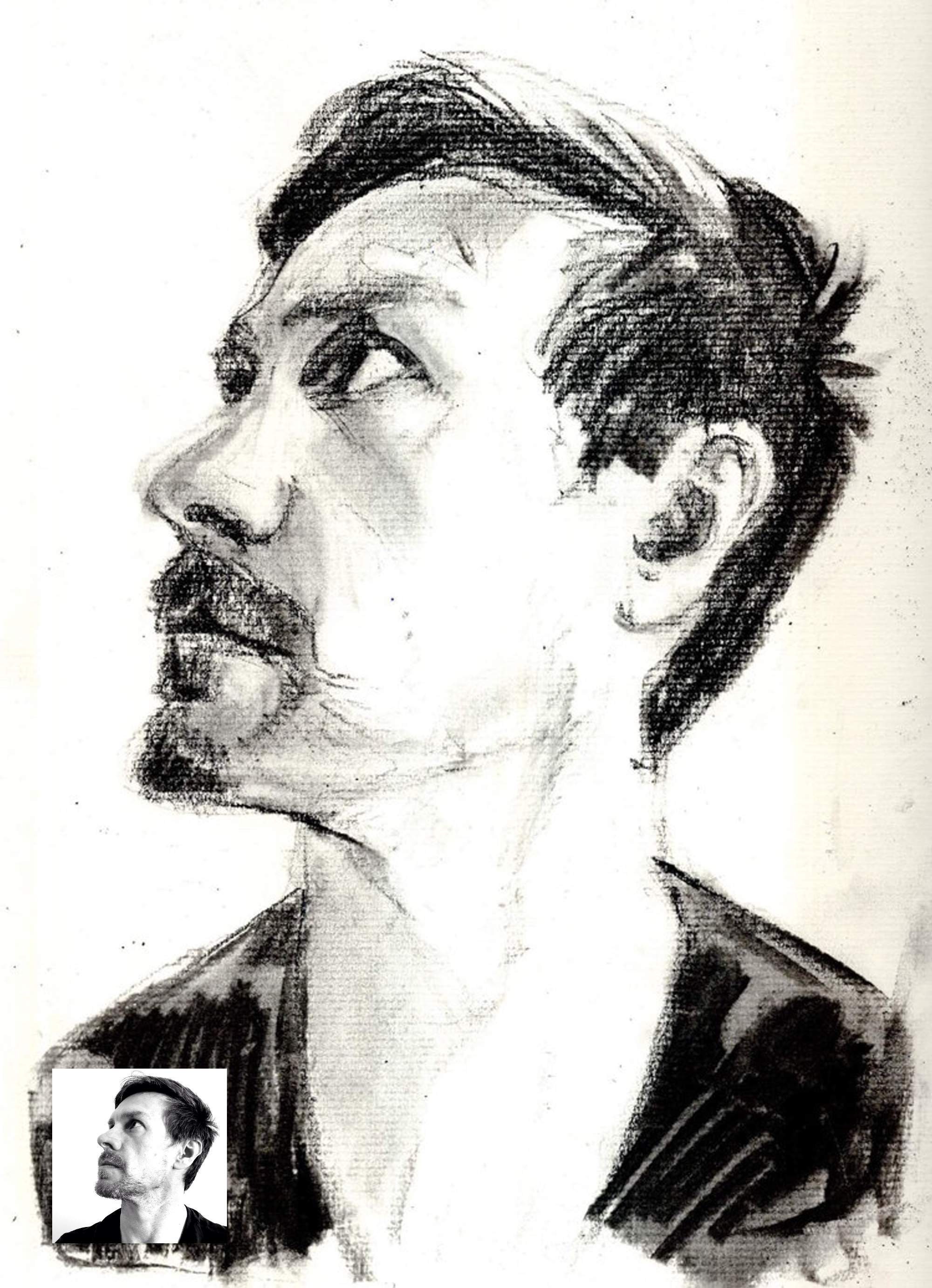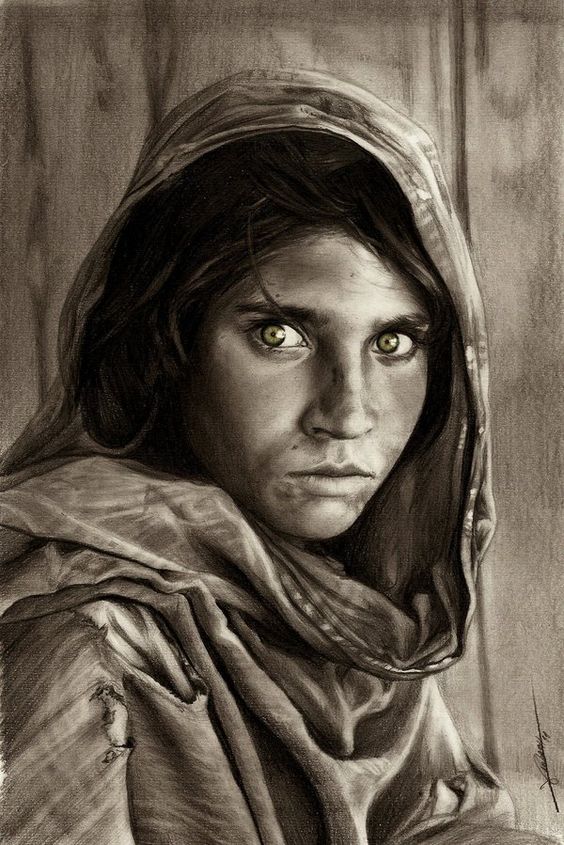
You will find that some areas only need a light dusting of chalk while others have to be worked and reworked until you achieve brightness of highlight you are searching for.įinally, when you finish applying the chalk you can spray your drawing with fixative to reduce the chance of smudges.
#CHARCOAL PORTRAITS SKIN#
Next, you gently shade these areas with chalk, softening and blending it into the surface of the skin with your finger or a blending stump.Īs you blend the chalk into your drawing, the strength of its tone will naturally diminish and you will probably have to repeat the process to bring it back up to the level you desire. Using white chalk to build up the effect of light on the skin is done in stages.įirst, you look closely for any hints of light on the face of your subject. By this we mean that the three elements which combine to create the drawing (the dark charcoal, the light chalk and the mid tone of the paper) are carefully balanced in proportion to one another where no single element is too dominant. It also balances the tone of the portrait. White chalk is is what we use to accentuate the effect of light on the skin. When drawing with charcoal and chalk the most dramatic element is kept to last. It can be sharpened to a fine point using the larger hole of a double pencil sharpener. It is best to use traditional blackboard chalk which is quite hard and opaque. Once you feel you have built up the tone of the face to the depth of form and sharpness of definition you desire, you should lightly spray your work again with fixative to protect it from accidental smudges in the later stages.įor the final stage of your drawing you will need a stick of white blackboard chalk, a double hole pencil sharpener and a blending stump. Most of the smaller, sharper details should be gently blended into and balanced with the softer areas of tone that surround them. Some of the smaller details around the eyes, nose, mouth and ears will need to be intensified to acquire that depth of tone which is always elusive in the earlier stages of a drawing. Some of the larger areas of tone around the forehead, cheeks, chin and neck should be gently darkened with graduated shading using soft charcoal and a blending stump. You begin by looking closely at the shading you applied earlier to see what subtle variations of tone lie within these areas. When you start to strengthen the details of the features, you also have to deepen the surrounding tones to balance the overall shading of the head. This stage requires the use of a soft charcoal stick or crayon, a sharp charcoal pencil, a blending stump and a fixative spray. You will also find that you have to sharpen your pencil more often to capture any intricate details.Īt the end of this stage you should spray what you have drawn with fixative to prevent smudges when you work over it in the later stages. The main difference is the darkness of the charcoal pigment which makes it easy to overwork your drawing and therefore requires a more restrained approach.

Here you are trying to establish a few key features that you can use as a foundation on which to build the tonal structure of the face.īuilding up the tones and details of the face requires a cautious step by step approach, gradually feeling your way rather than trying to get there fast.ĭrawing details with a charcoal pencil is much the same as using an ordinary pencil. This stage of the drawing involves looking closely to discern some of the darker tones of the eyes, nose, mouth, ears and hair. A fixative spray will also prove useful to protect your work from smudges.


Now you should return to using a sharp charcoal pencil to pick out the main features of the face.


 0 kommentar(er)
0 kommentar(er)
